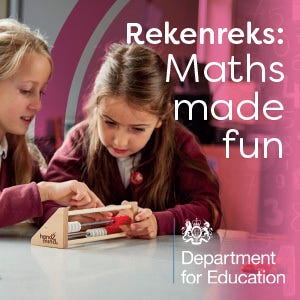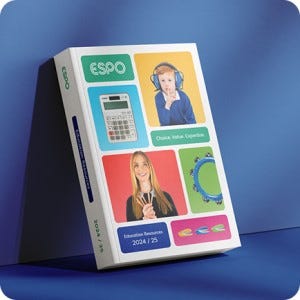Blog
The latest news, events and articles, including case studies, editorials, blog posts and featured products.

Math-terpiece Fun: Unlocking Maths Adventures with Rekenreks


Rekenreks, sometimes referred to as counting frames or arithmetic racks, are hands-on maths teaching resources that help young children develop their early mathematical skills.
The main characteristic of rekenreks is that they have the five-structure built in, which helps children develop arithmetic strategies anchored in five and 10. Each row consists of a five white, and five red coloured beads or blocks that are strung on to a rod and can be moved from one end of the frame to the other as children count, add and subtract.
Rekenreks provide a simple, hands-on way for children to learn basic arithmetic concepts, such as counting, addition, and subtraction. By physically manipulating the beads or blocks, children are able to understand the relationship between numbers as well as subitising, composing and decomposing numbers.
For example, children can use a rekenrek to practice counting from 1 to 10 or 20, or to practice adding and subtracting simple sums. They can also use the rekenrek to explore more advanced mathematical concepts, such as odd and even numbers, multiples, and divisibility.
In addition to helping children develop their mathematical skills, rekenreks can also be used to encourage problem-solving, critical thinking, and creativity. For example, children can be asked to use the rekenrek to find the sum of two numbers, or to find the difference between two quantities. By engaging in these types of activities, children are encouraged to think beyond the beads or blocks and to develop higher-level reasoning and problem-solving skills.
Rekenreks are an excellent educational tool for developing children's mathematical skills. They offer a simple, hands-on way for children to explore and understand basic arithmetic concepts, and to develop their number sense.
Check out these free printables:
Ideas for using a rekenrek in the classroom:
"Beat the Clock": In this game, children take turns using the rekenrek to solve simple addition or subtraction problems. They are given a set amount of time, such as 30 seconds, to solve as many problems as they can. The child with the most correct answers wins. This game can be made more challenging by increasing the difficulty of the problems or by reducing the amount of time available.
"Rekenrek Riddles": In this game, players take turns creating a number sentence using the beads on their rekenrek, and then presenting the sentence to the other players as a riddle. For example, a player might place a certain number of red beads and a certain number of white beads on their rekenrek and then ask the other players to guess what the equation represents. This game can be made more challenging by increasing the difficulty of the riddles or by adding time constraints.
"Rekenrek Relay": In this game, teams of players take turns solving simple addition or subtraction problems using the rekenrek. When a player correctly solves a problem, they pass the rekenrek to the next player on their team. The first team to solve a set number of problems wins. This game can be made more challenging by increasing the difficulty of the problems or by adding time constraints.
These games provide a fun and interactive way for children to practice and reinforce their mathematical skills using a rekenrek. By engaging in these types of activities, children can develop a strong foundation in mathematics while having fun at the same time.








